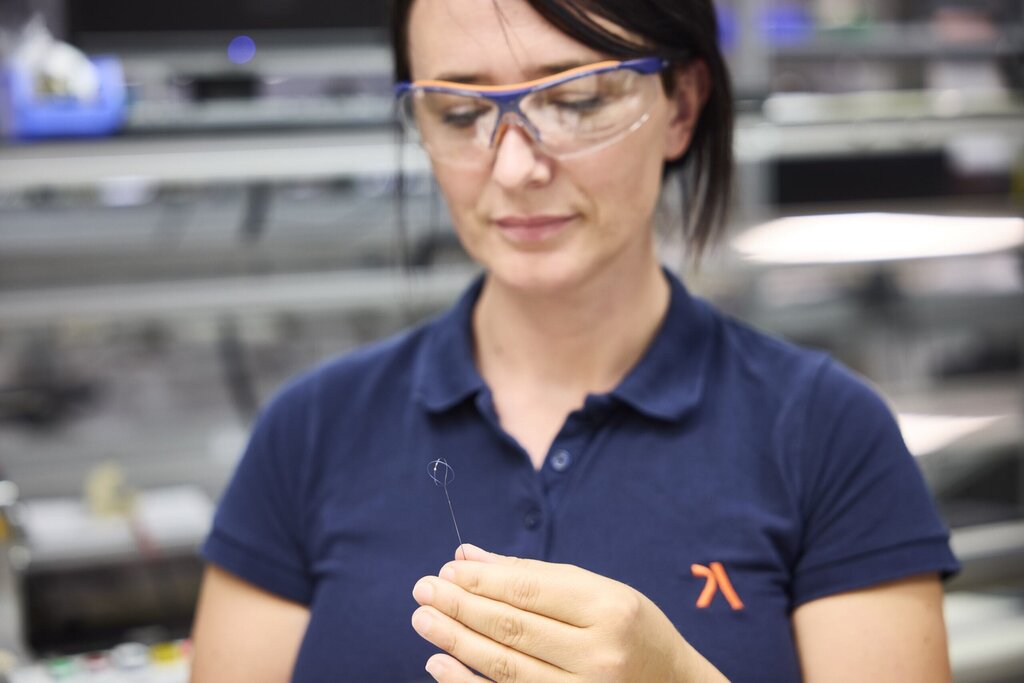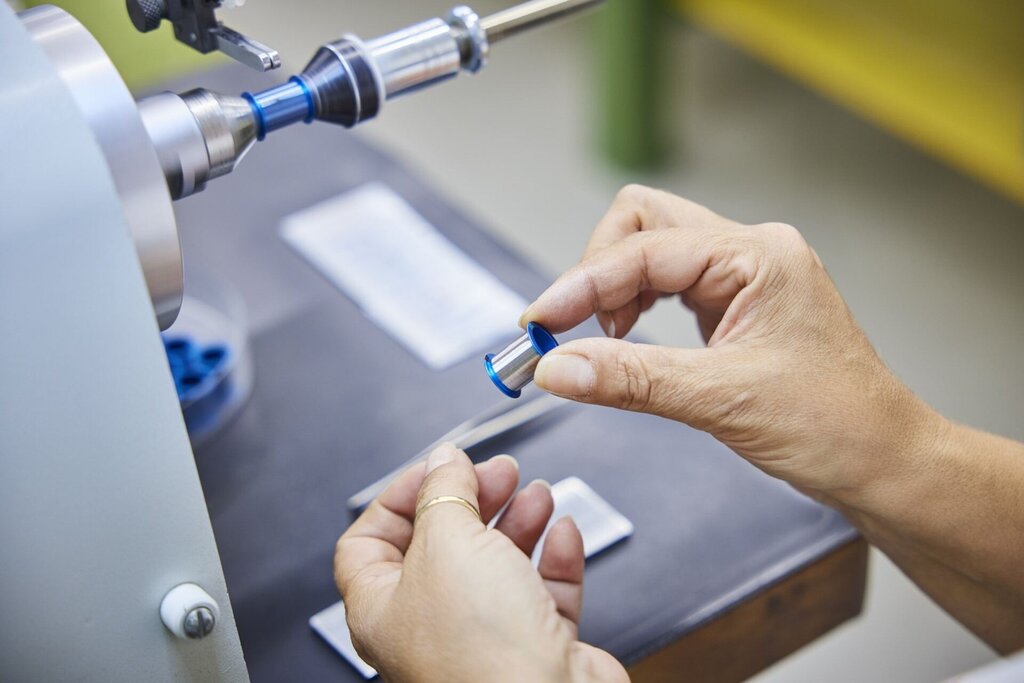Company Insight
Sponsored by Alleima
Revolutionizing minimally invasive therapies
The critical role of advanced wire‑based solutions.
Main image credit: Alleima

Dr. Bernd Vogel
In recent years, advancements in medical technology have significantly transformed minimally invasive therapies, utilizing materials such as nitinol, thermocouples, and conductive wires. Nitinol, known for its super-elasticity, shape memory, and biocompatibility, plays an integral part in these treatments. Thermocouples, devices that measure temperature through an electrical junction formed by two dissimilar metal alloys, ensure real-time and precise temperature monitoring during procedures. This article explores the crucial role of high-quality components in enhancing the efficacy and safety of cutting-edge treatments such as Pulse Field Ablation (PFA) for arrhythmia, Duodenal Mucosal Resurfacing (DMR) for type 2 diabetes, renal denervation for hypertension, and endometrial ablation for heavy menstrual bleeding. These therapies promise to improve, or even save, millions of lives worldwide.

Braiding is one of Alleima’s core capabilities in nitinol processing. Others include laser-cutting, shaping, grinding, joining, and cleanroom assembling. Credit: Alleima
Nitinol's versatility has led to its use in a wide array of medical devices. In addition to guidewires, nitinol is used in flexible retrieval devices and instruments, vascular filters, and permanent implants. These devices benefit from nitinol's ability to endure repeated stress without losing shape or performance. Nitinol’s adaptability allows it to be crimped, bent, or coiled into tight configurations, easing insertion through minimally invasive methods. In cardiovascular treatments, nitinol filters capture blood clots and prevent embolisms. These filters collapse for deployment and expand inside blood vessels to perform life-saving functions. Nitinol is also promising in steerable medical devices like endoscopes and catheters.
However, manufacturing nitinol in a cost-effective way while maintaining the highest quality requires specialist capabilities. Even the slightest deviation during production can alter the performance of the material. Understanding the impact of cold work, heat treatment, strain rate, and number of cycles is essential for optimizing the stress-strain behavior of nitinol.
Having acquired long-standing nitinol expertise with Endosmart in 2022 and Endox in 2024, Alleima combines decades of expertise in material science with leading know-how in nitinol processing, delivering wire-based solutions and medical components designed to meet the exacting demands of modern surgery. Whether it’s developing steerable devices for robotic surgery or advanced, flexible instruments and implants for various applications, including urology, gastroenterology, oncology or cardiovascular, Alleima’s collaborative approach ensures its clients can navigate the complexities of nitinol manufacturing with ease, highest quality, and functionality of its solutions all the way to market approval.
In a field where every innovation can translate into saved lives and improved patient outcomes, access to expert knowledge is invaluable. To learn more about Alleima's engineering services and processing capabilities in nitinol, visit their website, Nitinol—shaping the future—Alleima, where you can also download their nitinol whitepaper Nitinol and its transformative role in medical devices.

Dr. Bernd Vogel
When asked to simply describe the shape-memory effect, Dr. Bernd Vogel takes out a wire shaped like a heart, straightens it completely, and then slowly dips it into a cup of hot coffe. Immidately the wire returns to its perfect heart shape.

Braiding and Twisting detail center. Credit: Alleima
PFA and how it works
One of the most promising developments in recent years is pulsed-field ablation (PFA), a non-thermal method that uses electrical pulses to neutralise problematic cardiac tissue while preserving surrounding structures. Unlike traditional techniques like radiofrequency and cryoablation, PFA offers speed, precision, and safety, heralding a new era in arrhythmia care.
Catheters used in PFA are designed with advanced materials to ensure precision and reliability. One critical advancement is the use of a nitinol core, which allows the catheter to navigate the intricate anatomy of the heart with ease. Electrodes also play a crucial role in delivering the pulses during PFA. Electroplated electrodes, coated with specialized conductive materials, ensure efficient energy transfer while minimizing the risk of overheating or degradation. These electrodes are engineered to maintain consistent performance throughout the procedure, a critical factor in achieving precise ablation. Equally important are the transmitting wires that deliver electrical energy from the generator to the catheter. These wires must handle high voltages without compromising safety or efficiency. Collectively, these components form a sophisticated system that enables physicians to perform the procedure with unprecedented control and confidence.

Credit: Alleima
PFA represents a significant improvement in arrhythmia treatment, offering faster recovery times and reduced risks of complications, thereby enhancing the quality of care for patients suffering from irregular heartbeats. The use of PFA in electrophysiology procedures is expected to increase significantly, with projections indicating it could account for 75%-80% of EP ablation cases by 2030, up from 20% in 2024. Read the whole article here.
Duodenal Mucosal Resurfacing (DMR) for managing type 2 diabetes and metabolic diseases
Duodenal mucosal resurfacing (DMR) is a minimally invasive procedure for managing type 2 diabetes and metabolic diseases. It targets gut abnormalities to help regulate glucose and cholesterol levels, reduce liver fat, and achieve weight loss. The procedure uses an endoscopic ablation catheter to deliver heat to dysfunctional tissue, promoting regeneration and restoring metabolic function. Nitinol-centred devices ensure precise catheter positioning, while thermocouples provide real-time temperature monitoring at the ablation or resurfacing site to enhance safety and efficacy. This outpatient procedure typically takes less than an hour and offers new hope for patients struggling with these conditions. Read the whole article.
Renal denervation relieves hypertension
Renal denervation is a minimally invasive procedure for treating hypertension, which is responsible for approximately ten million deaths worldwide. This procedure targets overactive renal nerves, crucial for blood pressure regulation, using advanced medical technology and materials like nitinol. It involves inserting a catheter into the femoral artery and guiding it to the renal arteries to disrupt nerve activity. Renal denervation can significantly reduce blood pressure, lowering the risk of strokes and heart attacks for patients with resistant hypertension. The success of this procedure relies on the sophisticated design of catheter systems, including precise and controlled energy delivery through electroplated electrodes and real-time temperature monitoring by thermocouples, ensuring effective nerve disruption without collateral damage and enhancing patient outcomes. Read the whole article.
Endometrial ablation to treat heavy menstrual bleeding
Heavy menstrual bleeding, medically termed menorrhagia, is a condition that profoundly affects the lives of women globally, leading to physical discomfort and emotional distress. Endometrial ablation is a minimally invasive procedure designed to reduce or eliminate excessive menstrual bleeding by targeting the endometrium, the inner lining of the uterus. Techniques include radiofrequency ablation, thermal balloon ablation, hydrothermal ablation, and cryoablation, each using specialized instruments. Key components in these devices are medical-grade thermocouples for real-time temperature monitoring, transmitting wires, and nitinol-based guidewires, leveraging the unique flexible properties of this nickel-titanium alloy, crucial in minimally invasive procedures such as endometrial ablation, enabling precise control and reducing the risk of injury.
Once a guidewire has positioned the device correctly, transmitting wires conduct energy from the external power source to the applicator tip within the uterus. The insulation and structural design of the wires are also essential for efficient energy transfer, which enables the device to reach the temperatures or energy levels needed for complete endometrial destruction. A well-designed transmitting wire ensures that the energy is delivered precisely to the treatment areas, reducing the risk of uneven ablation or thermal spread. Read the whole article here.
Alleima supports leading OEMs developing medical solutions of the future
Developing complex medical solutions is challenging. Working with materials such as nitinol requires expertise that most OEMs do not have in-house. Selecting the optimal coating is key to end-performance success and a balancing act between engineering, chemistry, and functionality that tests even the most experienced design teams. Identifying the optimal coating during the initial design phase is essential to prevent unfavourable outcomes in subsequent process steps of the device.

Credit: Alleima
Alleima is also supporting leading OEMs with advanced engineering services, precision manufacturing capabilities and high-quality materials that drive innovation in medical technology. Their expertise in electroplating electrodes enhances conductivity or biocompatibility, while their superior ultra-fine medical wire ensures precise signal transmission and accurate temperature measurement through their medical grade thermocouples . By partnering with Alleima, OEMs can leverage cutting-edge technology and materials science to develop next-generation medical devices that improve patient outcomes and save lives.
For more information about Alleima and its capabilities, visit their website.
Contact information
Alleima Advanced Materials
1 Commerce Blvd.,
Palm Coast, FL, 32164,
United States
Tel: +1 386 445-2000
Fax: +1 386 447-5113
Email: sales.pc@alleima.com
Alleima Sonceboz
Sur le Brassiège 3
2605 Sonceboz-Sombeval
Switzerland
Tel: +41 32 942 39 20
Email: sales.sb@alleima.com
Alleima Karlsruhe
Wilhelm-Schickard Str. 9c
761 31 Karlsruhe
Germany
Tel: +41 41 761 63 55
Email:sales.ka@alleima.com
Endox
Paul-Lechler-Str.14
72581 Dettingen/Erms
Germany
Tel: +49 7123 91019-0
Email: info@endox-technik.de